Last House on Dead End Street
5.4 /10 1 Votes
Country United States | 5.2/10 IMDb Duration Language English | |||||||||||||||||||||||||||||||||
 | ||||||||||||||||||||||||||||||||||
Release date 1974May 1977 Tagline You bet your ass this is for real! | ||||||||||||||||||||||||||||||||||
last house on dead end street movie trailer 1977
Last House on Dead End Street (also known as The Fun House, At the Hour of Our Death, and The Cuckoo Clocks of Hell) is a 1977 American surrealist exploitation horror film written, produced, and directed by Roger Watkins, under the pseudonym Victor Janos. The plot follows a disgruntled ex-convict (also played by Watkins) who takes revenge on society by kidnapping four strangers and filming their murders in an abandoned building.
Contents
- last house on dead end street movie trailer 1977
- Plot
- Cast
- Origins and production
- Release
- Reception
- Critical analysis
- Home media
- Musical score
- References
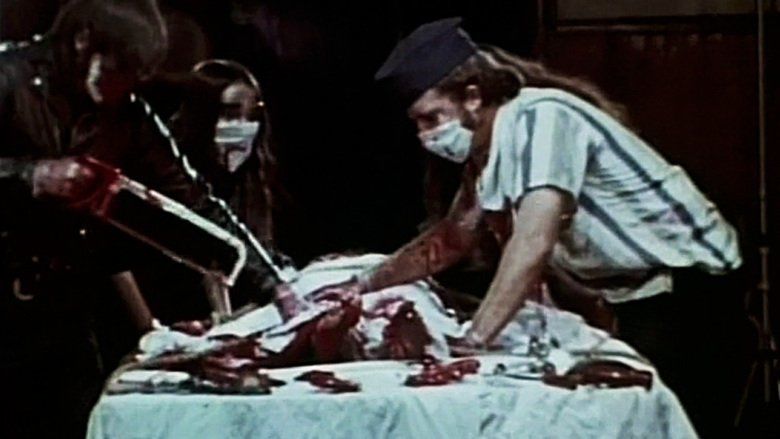
Filmed in 1972 with a cast and crew of theater students working under pseudonyms, the movie was released in 1974 under the title The Fun House before being re-released under its more widely recognized title in 1977. The film's title is derived from the controversial Wes Craven film The Last House on the Left.
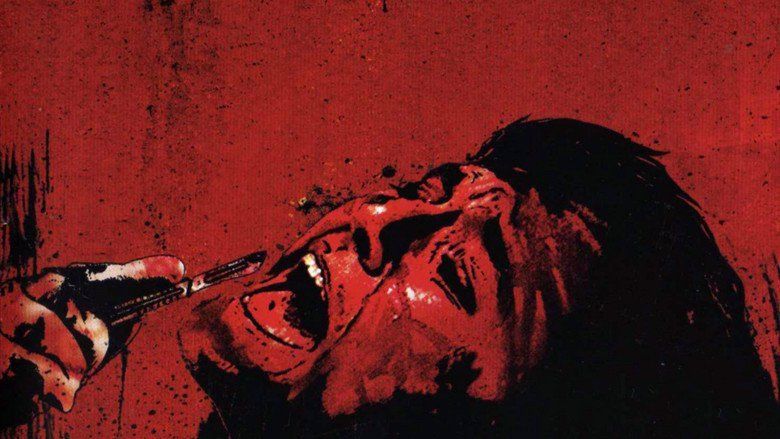
The true identity of pseudonymous director Victor Janos and the actors was largely unknown until Roger Watkins claimed on Internet message boards in 2000 that he had directed the film, a claim subsequently confirmed. The anonymity and refusal of the cast and crew to come forward about the film led many to believe that it had depicted real murders, a rumor which existed for decades.
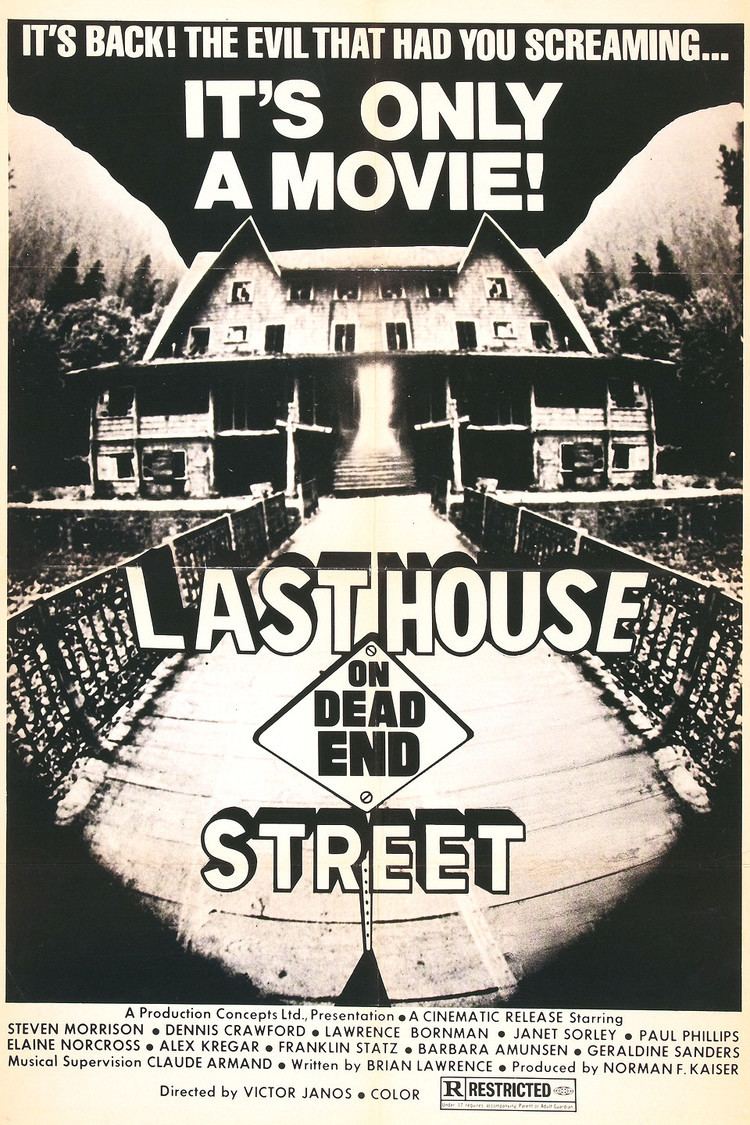
Plot
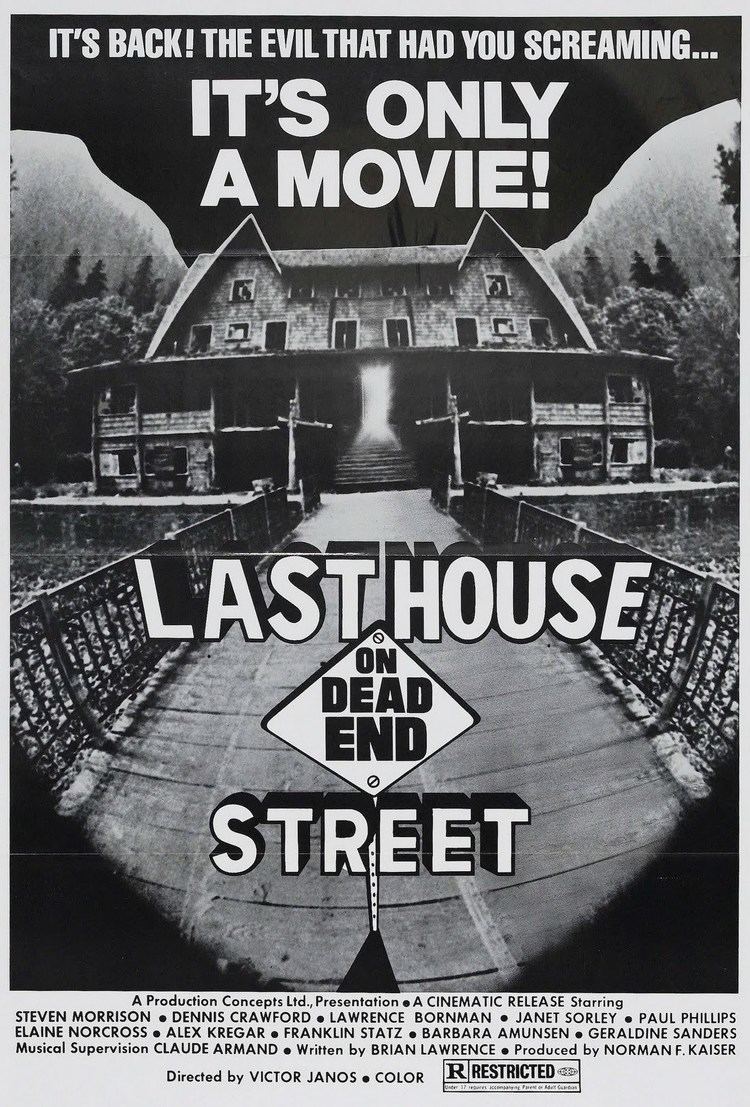
Terry Hawkins (Watkins) has just been released after spending a year in state prison on drug charges. He expresses interest in filmmaking, and claims to have previously made stag films that he was unable to sell. Terry believes audiences want "something more," so he decides to make snuff films.

After choosing a large abandoned college as the setting of his film, Terry secures financing from an unsuspecting film company run by a gay film executive named Steve Randall. Terry rounds up a group of women and men— some of them amateur filmmakers— who are willing to help make his film. Among them are filmmaker Bill Drexel; untrained actresses Kathy and her friend Patricia; and Ken, one of Terry's longtime acquaintances. For their first scene, Patricia and Kathy, wearing translucent plastic masks, lure a blind man to the building. There, Terry, donning a Zardoz mask, strangles the man to death while Bill films the murder.
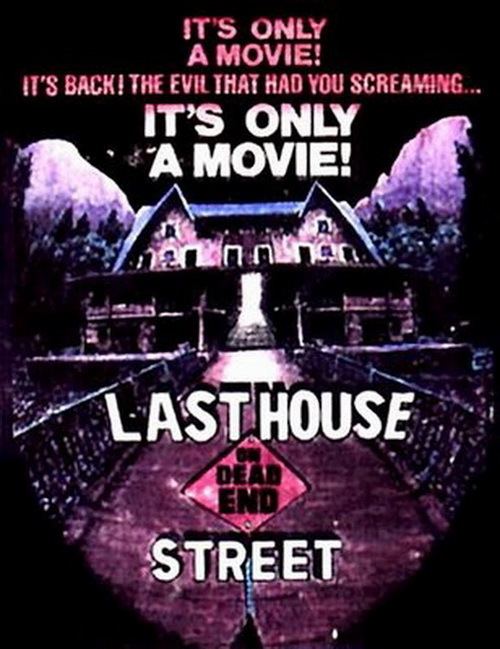
At a party that night, pornography director Jim Palmer is waiting anxiously for the gathering to end; his wife Nancy, done up in blackface, is whipped repeatedly in front of party guests as part of a sex game. Jim privately complains to Steve that people's tastes are becoming "hard to satisfy."
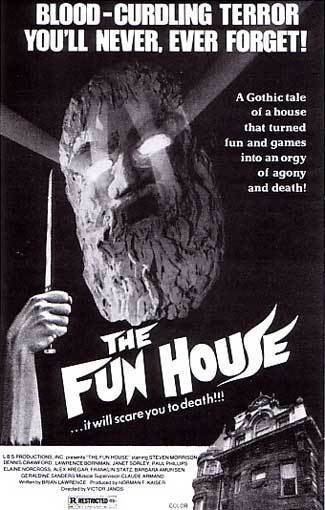
The following day, Terry seeks out Nancy, arriving at her house and introducing himself as a mutual friend of Ken's; Nancy has appeared in some of Jim's stag films with Ken, and is also a close friend of Steve's. At her house, Terry and Nancy have sex, and he shows her the footage of the blind man's murder in an attempt to convince her to ask Jim if he'll invest in the picture. She is shocked by how realistic the footage looks; Terry confesses that it is in fact real, and rapes her.
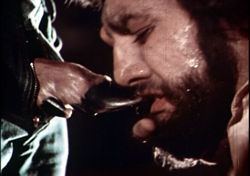
The next morning, Terry calls Steve and asks him to stop by the building to visit the film set. He also inquires about a young actress named Suzie Knowles for a part in his movie. Steve arrives that night, and is confronted by Terry and his crew inside the building, all of them wearing masks. Steve is knocked unconscious, and awakens to find himself tied up alongside Nancy and Suzie. Terry and his crew brand Suzie across her chest with a hot iron before Terry slashes her throat.

The following morning, Terry goes to meet Jim at his office and kidnaps him. At the building, Terry and his crew beat Jim to death while Bill again films the crime. After killing Jim, they take an unconscious Nancy and tie her to a large dining table. She awakens to Bill filming her, while Terry uses a hacksaw to dismember her legs before they eviscerate her with gardening shears.
That night, Terry and his crew confront Steve with the corpse of the blind man they killed earlier, and welcome him "back to the edge." Steve flees through the building, where he is confronted in the basement by Terry, who tackles him to the ground. Bill emerges from a dark corridor with his camera while Kathy and Patricia taunt Steve. Patricia removes her mask and takes off her blouse, exposing her breasts. She then unbuttons her pants, revealing a dismembered goat hoof she has held between her legs, which Terry forces Steve to fellate. Steve escapes, but is cornered in a room, where a row of spotlights suddenly light up. Terry and his crew, armed with a power drill, approach Steve, plunging the drill bit through his eye socket, killing him. One by one, they slowly back away from Steve's body and disappear into the darkness.
As the film fades out, a voiceover informs that Terry, Bill, Ken, Patricia, and Kathy were apprehended and are in a state penitentiary.
Cast
Origins and production
For over two decades following its theatrical release, the true identities of the director and cast were unknown to the public, with the credits being made up of pseudonyms. This led to a multitude of decades-long rumors about the film, most famously that it had surfaced from underground cinema circles in New York and had featured actual footage of real murders. In his 1995 book Killing for Culture, David Kerekes stated that "Any attempt to trace the names behind Last House on Dead End Street will lead no further than the credits themselves, all obviously false."
Sparingly released on video during the latter of the century, the film became the topic of urban legends as a result of its ambiguous origins and difficulty in obtaining.
In December 2000, a user posting on fabpress.com as "pnest" claimed to be the writer, producer, director and editor of the film, Victor Janos. This user was later revealed to be named Roger Watkins. He claimed the entire film was made in December 1972 in a building in Oneonta, New York called Old Main. Watkins and the rest of the cast were all current or former students in the theater department at the State University of New York at Oneonta. Watkins stated that at the time of making the film, he was an amphetamine addict, and that only about $800 of the $3,000 budget was spent making the film, while the remaining $2,200 was used to buy drugs.
The original working titles were At the Hour of Our Death and The Cuckoo Clocks of Hell. The original cut of the film, bearing the Cuckoo Clocks of Hell title, was three hours in length. Despite being screened in 1974, this version became a lost film, with the original negatives either destroyed or missing. Sources state that the reason for the film's delayed release had to do with one of the female actresses in the film suing Watkins over featuring her in a nude scene, worried that the film would impede her chances of finding success as a Broadway actress.
Release
The film was originally screened in its original three-hour-long version titled The Cuckoo Clocks of Hell in 1973, and purportedly caused theater riots in New York City and Chicago, the latter of which's theater was claimed to have been burned down. The following year, the film had a brief release under the title The Fun House, before being released yet again through Cinematic Releasing Corporation in 1977 under its most widely known title, Last House on Dead End Street, a play on the Wes Craven film The Last House on the Left (1972). Both of these cuts of the film were significantly shorter, running at 78 minutes as opposed to the original 175 minutes.
The film was banned by the British Board of Film Classification; Tobe Hooper's slasher film The Funhouse (1981) was also banned by association, as the films shared the same title.
Reception
AllMovie wrote "This notorious exercise in low-budget gore is poorly edited and photographed, but its catalogue of horrors and a genuinely nasty tone make it worthwhile for fans of sick cinema." Eric Campos of Film Threat wrote "It's not only the intense gore contained within these 78 minutes that has led many to label this film as the most vile ever made, but it's also the drab, dreary settings and the assortment of malcontents you're forced to put up with if you want to make it to the other end of this ride. Nothing that has to do with this film is happy or light and the film itself, even though presented nice and clear on this DVD, appears to be covered in dirt." Anton Bitel, writing for Film4, called the film "dirt cheap and deeply flawed, but still worth enduring, for even if the deaths are faked, there's a real enough intelligence behind it all."
A negative review came from TV Guide, writing "This vain attempt to combine splatter with a commentary on the viciousness of the movie business fails miserably on all counts." The New York Times said of the film: "This notorious exercise in low-budget gore is poorly edited and photographed, but its catalogue of horrors and a genuinely nasty tone make it worthwhile for fans of sick cinema," and drew comparisons to the Manson family killings.
In Slimetime: A Guide to Sleazy, Mindless Movies, Steve Puchalski called the film: "Harsh, repellent, and thoroughly unlikeable. It's effective much in the same way a large mallet to the temple is effective, but that doesn't mean it's any fun to sit through... In the Psychotronic Encyclopedia, Michael Weldon writes, 'Have you ever heard anyone even admit they saw it?' I wish I couldn't."
Critical analysis
Film scholars have noted Last House on Dead End Street for its unique preoccupation and self-reflexivity regarding the aestheticization of violence. In Holy Terror: Understanding Religion and Violence in Popular Culture (2010), film scholars Gerry Carlin and Mark Jones note the film's similarities with the Manson family murders, also noting its religious undertones which are amplified by the film's choral soundtrack: "Though principally a metafilmic commentary on cinematic perversity, the [lead character]'s gnomic pronouncements, and the excessively ritualized evisceral "sacrifices" allude to a debased if fundamentally unrepresentable religiosity."
Home media
Scarcely released on VHS, the film was released as a two-disc DVD set in 2002 by Barrel Entertainment. The release featured major contributions from director Watkins, who was heavily involved in the release. This edition was also released in Australia through Hard Corps Home Video. A separate Region 2 edition was released by Tartan Films' "Grindhouse" series on DVD in the United Kingdom.
In a 2015 interview with Joe Rubin, the co-owner of the cult DVD and Blu-ray label Vinegar Syndrome, he stated that the company was preparing a restored Blu-ray release of the film. Commenting on it, he said:
It’s probably the most tedious restoration we’ve ever done. We keep on finding more materials for it that are slightly better in certain places than the previous copies so we’ve had to redo/add to our restoration so many times. It’s tedious. But it’s coming. Unfortunately, no exciting revelations to be told; no fabled 3 hour cuts, etc. But when it does eventually come out, it’ll look better than ever, even if it’s still not perfect.
Musical score
The film's original musical score was released on vinyl February 12, 2016 by the independent labels Vombis and Light in the Attic. The bulk of the film's score and audio effects were sourced from composer and ethnomusicologist David Fanshawe, via KPM Musichouse.
References
Last House on Dead End Street WikipediaLast House on Dead End Street IMDb Last House on Dead End Street themoviedb.org
